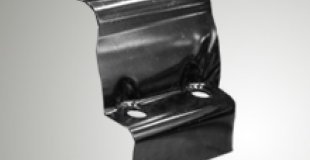Engineered Soundsteel lines driver's cabin in Locomotives
The challenges
With global modernisation in manufacture – it is important for engineers to continually strive for improvements in production. The topic of noise transfer in diesel locomotive driver compartments is a challenging one, given the need to maintain a safe driver cabin environment and ensure longevity and effectiveness of materials.
Reliable locomotives are often equipped with two drivers cabins and consideration to keep low impact and comfortable conditions despite heavy gauge steel structures housing drive equipment and several powered wheelsets closeby, is no small feat.
Vibration and low frequency structure borne noise creates driver discomfort and fatigue over long periods of exposure.It also heightens the risk of early structural failure, increased maintenance intervals which all lead to additional cost over the life of a locomotive.
The solutions
Soundsteel, being the most effective way of providing structural damping, is incorporated into the internal lining of the cabin structure in several models of locomotive to provide structural soundness of the body even over time. Soundsteel began to be designed into the construction phase of manufacture - originally supplied components for manual assembly, however when considerations were made, designers are now opting to order prefabricated parts to lower production costs.
What began as supplying sheets to install into compartments as part of manufacture has now become the latest in modern locomotive concept and design. To successfully reduce the spread of vibration from the axles, drive mechanisms, and pneumatic units is easily achieved, even across a broad temperature range with the constrained layer metal structure.
Soundsteel is typically supplied with an electro-galvanised finish, however customer specific composite can be supplied consisting of different grades of steel as well as various gauges. Soundsteel is easily processed by bending, riveting and painting to form a complete locomotive cabin. Pyrotek can arrange design, production and logistics to every scale for unified solutions.
Sorberscreen Micro can also be used in locomotive cabins which provides crucial absorptive medium to further enhance cabin environments by reducing the reverberation within. Modern looking and robust at the same time which is crucial for the materials used in the cabins lining, Sorberscreen micro can also be formed into various shapes and hence seamlessly being incorporated into the structure.
The results
Using the constrained layer principle, Soundsteel incorporates a high performance viscoelastic interlayer to dampen and effectively reduce structure borne noise. Even across freight locomotives running on industrial sidings where heavy, hardwearing materials exist, Soundsteel is highly suitable.
The material is made to comply to international fire requirements and low spread of flame – thus protecting the driver further – while eliminating the need for external isolators from structure borne noise. In this instance Soundsteel incorporates simplicity and forms a lightweight damping structure to insulate from airborne sound, impact and vibration.
Unique solutions for locomotive cabins or enclosure constructions mean a higher comfort level and increased operator safety on board the drive unit.




